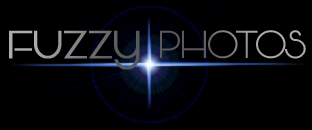| Image Links | |
| Published image | Full resolution |
| Red Channel Source Video | Via YouTube |
| Target Information | |
| Main Target Designation(s) | Jupiter |
| All Exposures | |
| Date(s) of acquisition | 14May2017 at 05:28UT |
| Location | Defiance, MO |
| Capture resolution | 800x800 |
| Red Exposures | |
| R-filtered monochrome | 860 x 27.91ms at 80% gain |
| Video source | 40% of 60" video at 35 fps (avg) |
| Green Exposures | |
| G-filtered monochrome | 731 x 32.88ms at 70% gain |
| Video source | 40% of 60" video at 30 fps (avg) |
| Blue Exposures | |
| B-filtered monochrome | 813 x 29.52ms at 80% gain |
| Video source | 40% of 60" video at 33 fps (avg) |
| Equipment | |
| Imager | ZWO ASI120MM |
| Telescope/Lens | Celestron C14 XLT SCT |
| Focal Length | 7820mm (f/22) |
| Mount | Celestron CGE Pro |
| Focuser | GSO Crayford |
| Accessories | |
| Focusing | Manual |
| Magnifiers | Orion 2x "Shorty" Barlow |
| Software | |
| Acquisition | FireCapture 2.4 |
| Guiding | None |
| Processing | AutoStakkert 3, Registax 6, WinJUPOS 10, PixInsight 1.8 |
I was fortunate to get access to the club's C14 again, this time on a slightly better night than my last attempt at Jupiter a week prior.  "Slightly better" in the humid spring months near St. Louis doesn't mean much, but every little bit counts, and even by a quick comparison it is immediately obvious that the atmosphere gave us a little better look into the luscious swirls of the gas giant's bands.
I took a slightly different approach to the composition of this image, and relied on the red filter data to serve both as the color channel as well as the luminance component of the image. Â The longer red channel wavelengths on Jupiter tends to cut through atmospheric turbulents just a bit better than the their shorter counterparts, and as most of the detail of Jupiter falls in the red band, we're able to accentuate these grand features. Â I think this approach combined with some tweaking to the scope's collimation prior to the imaging session helped compose what currently stands as my best Jupiter image yet! Â And it's just in time, as Jupiter begins to set to the west earlier and earlier in the evening.
Though the atmospheric seeing was pretty decent for the area, there is still considerable distortion present in even the red channel video. A look at the live capture used for this image will give an idea how powerful the wavelet processing in Registax is, allowing us to pull out otherwise hidden features from these unfortunate atmospheric characteristics.
This is an incredible encouraging image from the C14, as I don't yet believe I have this scope in top imaging shape yet. Â Focusing capability is still a bit lacking, relying on manual tweaking with a crayford focuser. Â As I try to keep my color exposures so close together due to Jupiter's blazing rotational speed, this doesn't allow inter-filter refocusing time, and I can see slight softness in my green filter and more softness in the blue. Â Once we get a more reliable motorized focusing method on there, I'm confident that the right nights will give us even more spectacular views of solar system objects.
As we bid adieu to Jupiter, I look forward to my next challenge on the C14: Saturn!

